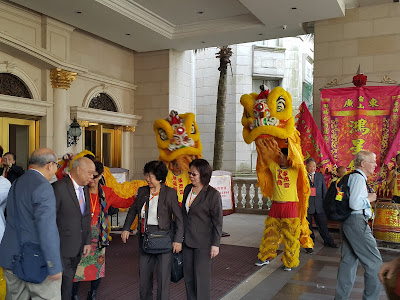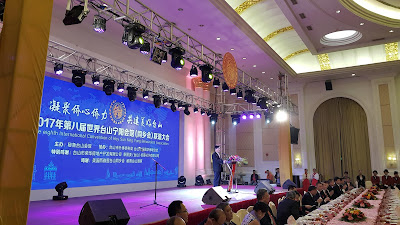 |
| A personalised card |
It’s
your colleague’s wedding anniversary
Your
friend is celebrating her birthday
A
family friend just passed away
A
festival is coming your way
How
do you wish someone or tell him you care on special occasions? Say it with a card!
It is fashionable to send a card all types of occasions in countries abroad. In Malaysia
during festive seasons like Hari Raya, Deepavali, Christmas and Chinese New Year. Young people
like to send birthday cards to each other.
It is fashionable to send a card all types of occasions in countries abroad. In
during festive seasons like Hari Raya, Deepavali, Christmas and Chinese New Year. Young people
like to send birthday cards to each other.
A
greeting card is short and sweet and very easy to pen. It takes a little effort on
the
giver but it gives immense pleasure to the receiver. Cards with special
messages are very expensive in the market.
Many people turn to electronic cards which are hassle-free and
convenient. But after some time, the novelty wears off.
Why not make your own greeting cards? Use your creativity and ingenuity to bring
joy and happiness to someone far away or give special meaning to someone with a
personalised message.
I have been making greeting cards for family and friends on festivals and special occasions. I find it relaxing and I get my rewards from the happy faces and exclamations.
 |
| A card made from cut-out peacock picture |
I have been making greeting cards for family and friends on festivals and special occasions. I find it relaxing and I get my rewards from the happy faces and exclamations.
Making cards requires some sacrifice and effort - something
original for someone special.
One of my favourites is making cards from pressed
flowers- beautiful preserved works of nature.
Let me share some simple steps of card making with you.
 |
| A card made with pressed flowers |
The materials you need are: white paper, hard cover paper (purchase from book shops, recycle from book covers), paper cutter or scissors, glue, double sided tape, fine forceps and your pressed flowers.
For the pressed flowers: pick your
flowers in the morning while they are fresh.
Choose small petal coloured ones (yellow, red or purple). Place them
between newspapers, making sure they do not overlap. Insert these folded newspapers in thick
books.(share reports or the telephone directory ).
After about a month, when they are completely dry,
sort them out into flowers and leaves that make compatible pleasing
designs. Use a fine forcep for easy
handling of such delicate dry flora.
Arrange your design on to a prepared
cut-to-size white paper. Use glue to make them permanent. Let’s call this (a).
Cut your coloured hard paper to size. Fold it into two, the front is top face and when this is
opened, you have two interior faces. Let’s call this (b).
Place the completed design (a) on the front face. Use double-sided tape to glue it. A finished self-made personalised card is
ready.
Use your creativity to write a phrase on the cover –
the fewer the words the better. Words
like, for someone special, thank you, happy birthday etc. Then write simple verses or messages on the
folded interior. The personalized
messages inside your card is the one that will give pleasure to the
receiver.
 |
| A pressed flowers card with words Thank you |
Hey presto, you have created a special card. Send it
to someone special. Have fun!
Start a new hobby of creativity
Use unique ideas and ingenuity
Touch someone’s heart today
And bring joy in a special way
.................................................................................................................................Photos are added here.
Update in 2019:
Nowadays people use social media - like facebook, twitter, whatsapp or email - to send greetings to
each other. Sad, but making or sending greeting cards is a dying art.






































































